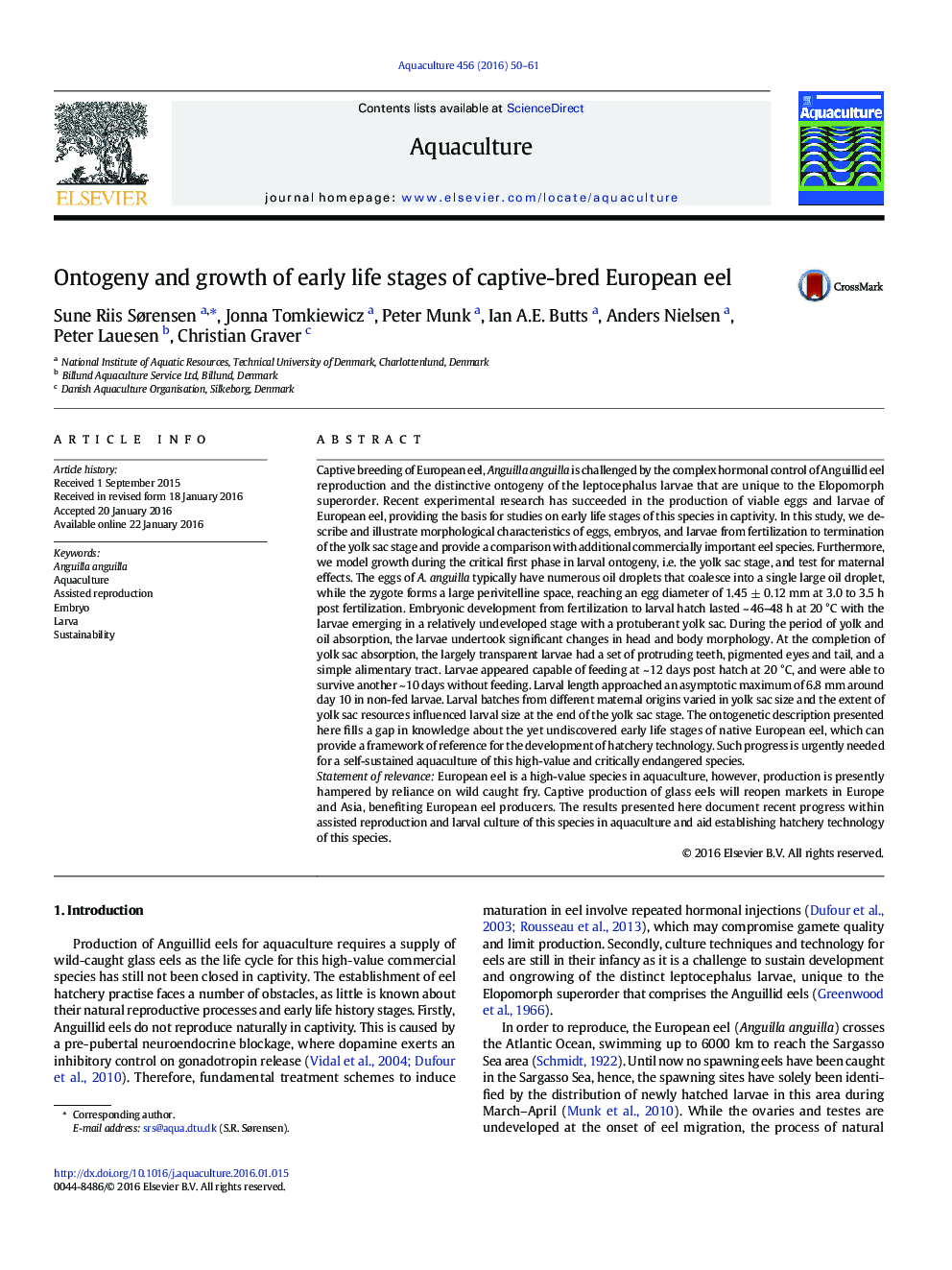| کد مقاله | کد نشریه | سال انتشار | مقاله انگلیسی | نسخه تمام متن |
|---|---|---|---|---|
| 2421472 | 1552831 | 2016 | 12 صفحه PDF | دانلود رایگان |
• Viable European eel offspring produced and reared throughout the yolk sac stage
• Early ontogenetic growth of European eel outlined based on controlled rearing
• Framework for assessment of offspring quality and performance in European eel
• Ontogenic growth and larval development among captive reared eel species compared
Captive breeding of European eel, Anguilla anguilla is challenged by the complex hormonal control of Anguillid eel reproduction and the distinctive ontogeny of the leptocephalus larvae that are unique to the Elopomorph superorder. Recent experimental research has succeeded in the production of viable eggs and larvae of European eel, providing the basis for studies on early life stages of this species in captivity. In this study, we describe and illustrate morphological characteristics of eggs, embryos, and larvae from fertilization to termination of the yolk sac stage and provide a comparison with additional commercially important eel species. Furthermore, we model growth during the critical first phase in larval ontogeny, i.e. the yolk sac stage, and test for maternal effects. The eggs of A. anguilla typically have numerous oil droplets that coalesce into a single large oil droplet, while the zygote forms a large perivitelline space, reaching an egg diameter of 1.45 ± 0.12 mm at 3.0 to 3.5 h post fertilization. Embryonic development from fertilization to larval hatch lasted ~ 46–48 h at 20 °C with the larvae emerging in a relatively undeveloped stage with a protuberant yolk sac. During the period of yolk and oil absorption, the larvae undertook significant changes in head and body morphology. At the completion of yolk sac absorption, the largely transparent larvae had a set of protruding teeth, pigmented eyes and tail, and a simple alimentary tract. Larvae appeared capable of feeding at ~ 12 days post hatch at 20 °C, and were able to survive another ~ 10 days without feeding. Larval length approached an asymptotic maximum of 6.8 mm around day 10 in non-fed larvae. Larval batches from different maternal origins varied in yolk sac size and the extent of yolk sac resources influenced larval size at the end of the yolk sac stage. The ontogenetic description presented here fills a gap in knowledge about the yet undiscovered early life stages of native European eel, which can provide a framework of reference for the development of hatchery technology. Such progress is urgently needed for a self-sustained aquaculture of this high-value and critically endangered species.Statement of relevanceEuropean eel is a high-value species in aquaculture, however, production is presently hampered by reliance on wild caught fry. Captive production of glass eels will reopen markets in Europe and Asia, benefiting European eel producers. The results presented here document recent progress within assisted reproduction and larval culture of this species in aquaculture and aid establishing hatchery technology of this species.
Journal: Aquaculture - Volume 456, 1 April 2016, Pages 50–61
